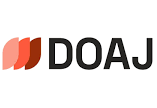About the journal
ACADEMIC STANDARDS
IJO follows a stringent peer review policy. Each article is first evaluated by the editor-in-chief for the originality and scientific rigor of its research. If it passes this first test, the editor-in-chief assigns at least two peer reviewers, to determine whether it meets the rigorous scientific standards, whether it requires revisions, or whether it should be rejected. Only original material that meets IJO editorial standards will be published.
Announcement:
Respected Ph.D. students of Islamic Azad University,
It is worth noting that according to circular number 10/79534 dated 1398 / 12 / 7, publishing in IJO with rank “A”, leads to a score of 2. In this sense, all Ph.D. students can submit and publish their papers in IJO to achieve this score.
Editorial office of IJO.
-
Open Access Article
1 - A new robust optimization approach to most efficient formulation in DEA
Reza Akhlaghi Mohsen Rostamy-Malkhalifeh Alireza Amirteimoori Sohrab KordrostamiIssue 2 , Vol. 15 , Spring 2023In this article, we investigate a new continuous linear model with constraints for the direct selection of the most efficient unit in the analysis of data coverage presented by Akhlaghi et al. (2021) on uncertainty robust optimization. Considering the importance of inco MoreIn this article, we investigate a new continuous linear model with constraints for the direct selection of the most efficient unit in the analysis of data coverage presented by Akhlaghi et al. (2021) on uncertainty robust optimization. Considering the importance of incorporating uncertainty into performance evaluation models in the real world and its increasing application in various problems, we propose a robust optimization approach. Given the discrete and non-convex nature of the introduced models for selecting the most efficient decision-making unit, examining the dual and finding an optimistic scenario is practically impossible. Therefore, by utilizing the linear model presented by Akhlaghi et al. (2021) with constraints for identifying the most efficient unit, we can investigate the robustness of the desired model using(BS )Bertsimas and Sim's (2004) robust estimation method while also considering uncertainty. We aim to demonstrate that employing a robust formulation leads to reliable performance in uncertain conditions Manuscript profile -
Open Access Article
2 - Legendre Wavelet Method for a Class of Fourth-Order Boundary Value Problems
سرکوت عبدی آرام عزیزی محمود شفیعی جمشید سعیدیانIssue 2 , Vol. 12 , Spring 2020In this paper we apply an approximate method based on Galerkin approach with Legendre wavelets basis, on a class of fourth order boundary value problems. The approach reduces the main equation to a system of linear algebraic equations that could be solved numerically. T MoreIn this paper we apply an approximate method based on Galerkin approach with Legendre wavelets basis, on a class of fourth order boundary value problems. The approach reduces the main equation to a system of linear algebraic equations that could be solved numerically. The operational matrix of the method is obtained, and the convergence of the method is proved. we approximate the solution and its higher order derivatives, for some special examples and compare the results with some other numerical methods. The results show the effectiveness of the proposed method. Manuscript profile -
Open Access Article
3 - Efficiency Evaluation of Railway Freight Stations by Using DEA Approach
Davoud Haghighi رضا بابازادهIssue 2 , Vol. 12 , Spring 2020Railway freight stations roles as points in which traffic processes can be merged and diverged are of paramount importance. Numerous activities such as train formation, alighting and interchanging, technical checks are also done at these points. Due to the great importa MoreRailway freight stations roles as points in which traffic processes can be merged and diverged are of paramount importance. Numerous activities such as train formation, alighting and interchanging, technical checks are also done at these points. Due to the great importance of using railway infrastructures and rolling stocks facilities efficiently, the efficiency studies in this area are considered as a demanding task more than ever. Therefore, we implement a methodology based on data envelopment analysis to address this issue. The suggested methodology in this research can be used for measuring the efficiency of railway freight stations and ranking them by using DEA and Anderson & Peterson methods. This methodology can be used for analyzing the relative ‘technical efficiency’ of railway freight stations to manage train stops regarding the current station capacity. We applied this model in a case study of the 12 busiest train stations in Isfahan railway to measure and rank their efficiency and assess the effect of traffic type on the results by using robust regression. Manuscript profile -
Open Access Article
4 - Factors affecting deviations of efficiency in distance-based Common Set of Weight -DEA models
سعید شاه قبادیIssue 1 , Vol. 13 , Winter 2021There are different approaches to generate a common set of weights in DEA based on the p - distance measure. Deviation of an efficiency score derived from a CSW from target efficiency score may be related to the model and the parameter p. In this study, we try to clarif MoreThere are different approaches to generate a common set of weights in DEA based on the p - distance measure. Deviation of an efficiency score derived from a CSW from target efficiency score may be related to the model and the parameter p. In this study, we try to clarify points about choosing p, model, and data set if it is necessary to produce an efficiency score with the least deviation by a CSW. Two improved linear models are developed by analyzing the result of available models. The results of the proposed models have smaller individual and overall efficiency than corresponding prior ones that It has been confirmed with numerical examples and simulation analysis. Manuscript profile -
Open Access Article
5 - Centralized resource allocation with the possibility of downsizing to evaluate two-stage production system with shared inputs
Amir Yadollahi رضا کاظمی متین Farhad Hosseinzadeh LotfiIssue 2 , Vol. 13 , Spring 2021This paper proposes a centralized network data envelopment analysis model that combines the centralized data envelopment analysis model with possibility of downsizing and two-stage network data envelopment analysis. In the proposed model, this paper also considers the s MoreThis paper proposes a centralized network data envelopment analysis model that combines the centralized data envelopment analysis model with possibility of downsizing and two-stage network data envelopment analysis. In the proposed model, this paper also considers the situation in which shared inputs are jointly consumed in each stage. We also assume some outputs can be produced by the first and second stages by using separate inputs. The proposed model is illustrated in an empirical example of twenty sale representatives in two provinces of Golestan and Mazandaran. The results provide valuable information for the centralized decision-maker on how to reallocate resources among the units. Manuscript profile -
Open Access Article
6 - Presenting a Mathematical Programming Model for Routing and Scheduling of Cross-Dock and Transportation in Green Reverse Logistics Network of COVID-19 Vaccines
Pezhman Abbasi Tavallali محمدرضا فیلی زاده Atefeh AmindoustIssue 2 , Vol. 13 , Spring 2021Cross-docking is the practice of unloading Coronavirus vaccines from inbound delivery vehicles and loading them directly onto outbound vehicles. Cross-docking can streamline supply chains and help them move Coronavirus vaccines to pharmacies faster and more efficiently MoreCross-docking is the practice of unloading Coronavirus vaccines from inbound delivery vehicles and loading them directly onto outbound vehicles. Cross-docking can streamline supply chains and help them move Coronavirus vaccines to pharmacies faster and more efficiently by eliminating or minimizing warehouse storage costs, space requirements, and inventory handling. Regarding their short shelf-life, the movement of Coronavirus vaccine to cross-dock and their freight scheduling is of great importance. Achieving the goals of green logistics in order to reduce fuel consumption and emission of pollutants has been considered in this study. Accordingly, the present study developed a mixed-integer linear programming (MILP) model for routing and scheduling of cross-dock and transportation in green reverse logistics network of Coronavirus vaccines. The model was multi-product and multi-level and focused on minimizing the logistics network costs to increase efficiency, reduce fuel consumption and pollution, maximizing the consumption value of delivered Coronavirus vaccines and minimizing risk of injection complication due to Coronavirus vaccines corruption. Considering cost minimization (i.e., earliness and tardiness penalty costs of pharmacies order delivery, cost of fuel consumption and environmental pollution caused by outbound vehicles crossover, the inventory holding costs at the temporary storage area of the cross-dock and costs of crossover and use of outbound vehicles) as well as uncertainty in pharmacies demand for Coronavirus vaccines, the model was an NP-hard problem. In this model, the problem-solving time increased exponentially according to the problem dimensions; hence, this study proposed an efficient method using the NSGA II algorithm. Manuscript profile -
Open Access Article
7 - Supplier selection in the sustainable supply chain: The application of analytic hierarchy process and fuzzy data envelopment analysis
حمیدرضا رضایی محمد طالقانی محسن شفیعیان تارا نیک اندامIssue 1 , Vol. 11 , Winter 2019The development and management of an effective and efficient supply chain involve the selection of the suppliers. Only economic criteria, including cost and delivery, once used to be considered in the process of supplier selection. But, they do not suffice for the evalu MoreThe development and management of an effective and efficient supply chain involve the selection of the suppliers. Only economic criteria, including cost and delivery, once used to be considered in the process of supplier selection. But, they do not suffice for the evaluation of suppliers anymore due to the rapidly changing environment, and different perspectives are needed to be considered. The present paper aims to present a hybrid method based on fuzzy data envelopment analysis for sustainable supplier selection. At first, the criteria for sustainable supplier selection are derived from the relevant literature. Then, the hierarchy of the criteria and their preferential interrelations are specified by analytic hierarchy process. Eventually, the performance of the suppliers is evaluated using fuzzy data envelopment analysis. The presented DEA model has been inspired by the concept of ideal and anti-ideal decision-making units (DMUs) in the evaluation of cross-efficiency. According to this concept, a DMU is efficient if it is close to the ideal DMU’s performance and far from the anti-ideal DMU’s performance. Manuscript profile -
Open Access Article
8 - Determining the Key Indicators affecting Electronic Customer Relationship Management (e-CRM) Using an integration of balanced scorecard and fuzzy screening techniques (Case Study: Companies Covered by Parsian Data-Processors Group)
abbas shahnavazi Mehran Nemati Gonbaghi Seyedeh Faezeh Teymouri Bahman Ghasemi dakdareIssue 1 , Vol. 12 , Winter 2020Nowadays, increasing competition among companies and the huge cost of attracting new customers has led to companies seeking to retain existing customers rather than looking to attract new customers. These factors together have led to the emergence of customer relationsh MoreNowadays, increasing competition among companies and the huge cost of attracting new customers has led to companies seeking to retain existing customers rather than looking to attract new customers. These factors together have led to the emergence of customer relationship management. Thanks to the development of information and communication technology, especially the Internet, the use of customer relationship management has expanded and facilitated, and electronic customer relationship management has been formed. Customer Relationship Management (EMS) seeks to deepen and empower customer relationships by utilizing a variety of information and communication technologies such as websites. With the aim of identifying key indicators of performance and improving the performance of the Balanced Scorecard, this research paper has attempted to integrate it with Yager’s Fuzzy screening technique. This integrated model was implemented to develop a balanced scorecard for customer relationship management evaluation of companies covered by Parsian Data-Processors Group. The scale of “very important” was set as an acceptable scale for going through the screening process and for agreeing between managers and experts on the most important indicators. The results showed that the five indicators of customer viewpoint including increasing customer support during Purchasing Process and Afterward, Increasing Brand Confidence and Credibility , Participating in the Online Environment, Enhancing Customer Service After Sales, Increasing Customer Satisfaction, Increasing Site Usage and Various Site Capabilities, the four indicators of learning and innovating viewpoint including continuous improvement and modernization of the company's current services, the ability to use the new technologies, knowledge management capabilities in the organization and the ability of the company to learn from the market and to react it, the four indicators of financial viewpoint including Increased profitability; Increased share of online sales, flexibility in financing and increased annual sales , and the four indicators of exchange (processes) viewpoint including increased software update, increased use of advanced technologies compared to competitors; increased and improved use of Technology and Increasing Diversity of Services Offered on the Site (E-mail) have extracted as Key Indicators of Balanced Card Relationship Management Evaluation. Manuscript profile -
Open Access Article
9 - Flying Squirrel Optimizer (FSO): A novel SI-based optimization algorithm for engineering problems
غلامرضا عزیزیان فرید میارنعیمی محسن راشکی ناصر شابختیIssue 2 , Vol. 11 , Spring 2019This paper provides a novel meta-heuristic optimization algorithm. The behaviors of flying squirrels in the nature are the main inspiration of this research. These behaviors include flying from tree to tree and walking on the ground or on a tree branch to find food. The MoreThis paper provides a novel meta-heuristic optimization algorithm. The behaviors of flying squirrels in the nature are the main inspiration of this research. These behaviors include flying from tree to tree and walking on the ground or on a tree branch to find food. They also contact each other with chirp or squeak. This algorithm is named flying squirrel optimizer (FSO). Two main theories of motion were used for the simulation of flying and walking of the flying squirrels and they are Lévy flight and normal random walk. FSO is also benchmarked on twelve mathematical functions and the answers are compared with MFO, PSO, GSA, BA, FPA, SMS, and FA. The results show that FSO can provide good results when compared with these well-known meta-heuristics approaches. Five classical engineering problems and a real issue in the field of dam engineering were employed to challenge the FSO abilities in solving engineering design problems. The results also show that the proposed FSO algorithm can be used on a wide range of problems with unknown search spaces. Manuscript profile -
Open Access Article
10 - A new method for solving of the Graph Coloring Problem based on a fuzzy logic and whale optimization algorithm
طاها مصطفایی فرزین مدرس خیابانی نیما جعفری نویمی پور بهروز دانشیانIssue 2 , Vol. 13 , Spring 2021Abstract: In recent years, Graph Coloring Problem (GCP) is one of the main optimization problems from literature. Many real world problems interacting with changing environments can be modeled by dynamic graphs. Graph vertex coloring with a given number of colors is a w MoreAbstract: In recent years, Graph Coloring Problem (GCP) is one of the main optimization problems from literature. Many real world problems interacting with changing environments can be modeled by dynamic graphs. Graph vertex coloring with a given number of colors is a well-known and much-studied NP-hard problem. Meta-heuristic algorithms are a good choice to solve GCP because they are suitable for problems with NP-hard complexity. However, in many previously proposed algorithms, there are common problems such as runtime algorithm and low convergence of algorithm. Therefore, in this paper, we propose the Fuzzy Whale Optimization Algorithm (FWOA), a variety of basic Whale Optimization Algorithm (WOA), to improve runtime and convergence of algorithm in the GCP. Since WOA at first was introduced for solving continuous problem, we need a discrete WOA. Hence, to use FWOA to discrete search space, the standard arithmetic operators such as addition, subtraction and multiplication extant in FWOA encircling prey, exploitation phase and exploration phase operators based on distance’s theory needs to be redefined in the discrete space. Parameters p and r, are defined randomly in the WOA algorithm in FWOA algorithm defined as fuzzy and are selected in fuzzy tragedy. A set of graph coloring benchmark problems are solved and their performance are compared with some well-known heuristic search methods. Results illustrate that FWOA algorithm are the original focus of this work and in most cases success rate is nearly 100% and the runtime and convergence algorithm has been improved on some graphs. But as we have illustrated that comparison with other manners, we cannot deduce that our algorithm is the best in all instance of graphs. It can be said that a proposed algorithm is able to compete with other algorithms in this context. Obtained results approved the high performance of proposed method. Manuscript profile









